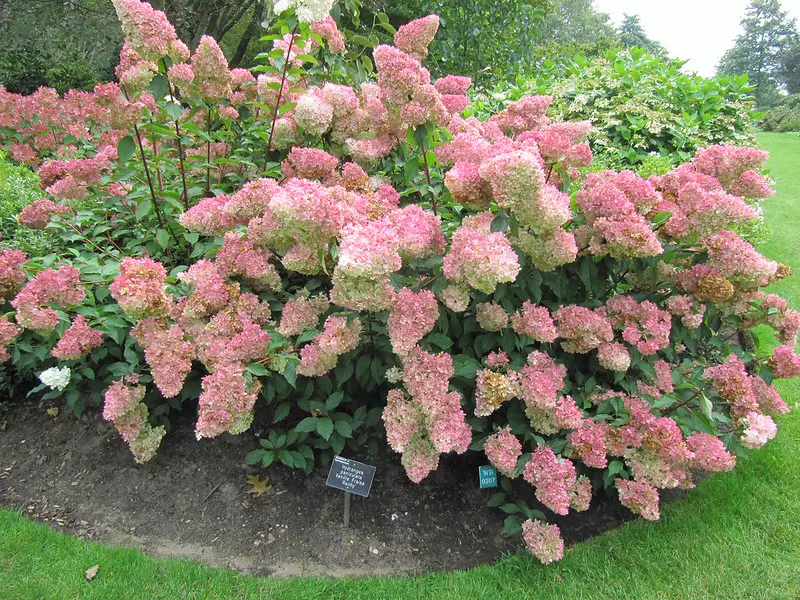
The Ultimate Guide to Hydrangea peniculata (Panicle Hydrangea)
A complete guide to Hydrangea peniculata, including planting, pruning, soil adjustments, eco-friendly pest management, propagation, and garden design ideas.
Read MoreHydrangea paniculata 'Pinky Winky' is a distinctive variety of panicle hydrangea renowned for its striking two-toned flower panicles and robust growth habit. This deciduous shrub adds visual interest to gardens from mid-summer through autumn, making it a favourite among horticulturists and garden enthusiasts.
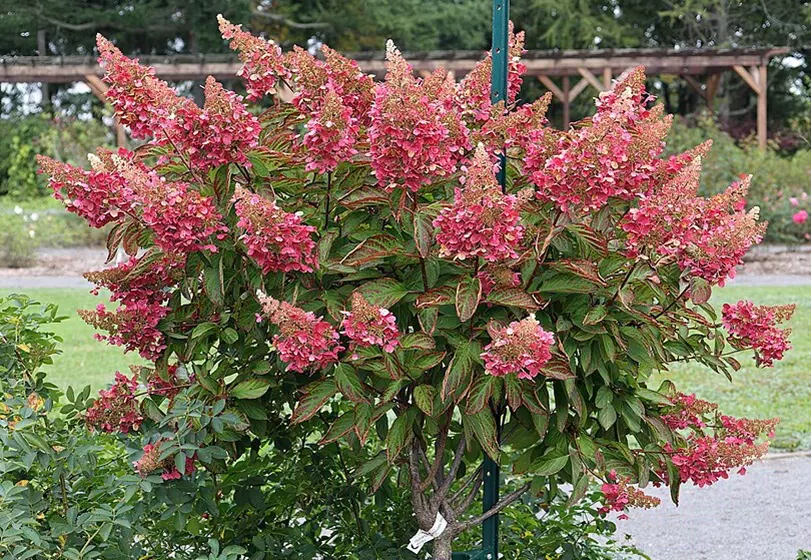
The 'Pinky Winky' hydrangea was developed by Flemish breeder Johan Van Huylenbroeck in Belgium. It was introduced to the market in the early 2000s and has since gained popularity for its unique flowering characteristics and adaptability.
'Pinky Winky' is characterised by large, conical flower panicles that can reach up to 40cm in length. The blooms emerge white and gradually transition to pink, starting from the base and moving upwards, resulting in a captivating bicolour effect. The sturdy stems support the sizeable flower heads, preventing flopping—a common issue with some hydrangea varieties. The foliage is a lush green, providing an attractive backdrop to the vibrant blooms.

Hydrangea paniculata 'Pinky Winky' offers a blend of aesthetic beauty and ease of care, making it a valuable addition to diverse garden settings. Its distinctive flowering pattern and robust nature cater to both novice and experienced gardeners seeking to enhance their outdoor spaces.
Hydrangea paniculata 'Pinky Winky' thrives in moist but well-drained soils. While adaptable to various soil types, it performs best in fertile soils enriched with organic matter. For chalky soils, incorporating organic material can enhance growth and vitality.
This hydrangea variety prefers partial shade but can tolerate full sun, provided the soil remains consistently moist. In hotter climates, offering some afternoon shade helps prevent leaf scorch and maintains plant health.
Consistent moisture is crucial for 'Pinky Winky'. Regular watering, especially during dry periods, ensures optimal growth. Applying mulch around the base aids in moisture retention and temperature regulation.
'Pinky Winky' blooms on new wood, making timely pruning essential. Conduct pruning in late winter or early spring, cutting back the previous year's growth to a healthy framework between 30cm and 60cm in height. This practice encourages vigorous growth and abundant flowering.
Incorporating well-rotted organic matter into the soil during planting provides essential nutrients. An annual application of balanced fertiliser in early spring supports robust growth and prolific blooming.
Hardy in USDA zones 3 to 8, 'Pinky Winky' withstands cold winters and adapts to various climates. Its resilience makes it suitable for a wide range of garden settings.
While generally resilient, 'Pinky Winky' may encounter pests like aphids, hydrangea scale, and vine weevil. Regular monitoring and appropriate treatments help manage these issues. Ensuring good air circulation and avoiding overhead watering can prevent fungal diseases such as powdery mildew and leaf spot.
When planting, space shrubs approximately 1.5 metres apart to accommodate their mature size and ensure adequate air circulation. Dig a hole twice the width of the root ball, position the plant at the same depth as in its container, and backfill with enriched soil. Water thoroughly after planting to establish strong roots.
In autumn, leaving spent flower heads on the plant can provide frost protection for new buds. In early spring, remove old flower heads by cutting back to the first pair of healthy buds to promote new growth and flowering.
By adhering to these cultivation practices, gardeners can enjoy the striking beauty of Hydrangea paniculata 'Pinky Winky'. Its unique flowering pattern and robust nature make it a valuable addition to diverse garden landscapes.
Hydrangea paniculata 'Pinky Winky' produces flowers on new wood, meaning the current season's growth. Recognising this characteristic is essential for effective pruning, as it determines the optimal timing to encourage abundant blooms.
The ideal period to prune 'Pinky Winky' hydrangeas is during late winter to early spring, just before new growth emerges. Pruning at this time promotes vigorous growth and maximises flowering potential. Avoid pruning in autumn, as it can stimulate new growth susceptible to frost damage.
Ensuring tools are clean and sharp enhances efficiency and reduces the risk of disease transmission.
Regular pruning not only enhances the plant's appearance but also encourages robust growth and prolific blooming.
After pruning, apply a balanced fertiliser to support new growth. Mulching around the base helps retain moisture and regulate soil temperature. Monitor the plant for any signs of stress or disease, addressing issues promptly to ensure a healthy growing season.
Proper pruning of Hydrangea paniculata 'Pinky Winky' is vital for maintaining its health and enhancing its stunning floral display. By adhering to these guidelines, gardeners can enjoy a vibrant and flourishing hydrangea that adds beauty to any landscape.
While Hydrangea paniculata 'Pinky Winky' is generally resilient, it can be susceptible to several pests that may impact its health and appearance.
'Pinky Winky' hydrangeas may also be affected by various diseases, primarily of fungal origin.
Implementing proactive strategies can significantly reduce the risk of pest infestations and disease occurrences.
When issues arise, appropriate control measures can mitigate damage and restore plant health.
By understanding the common pests and diseases that can affect Hydrangea paniculata 'Pinky Winky', and implementing effective preventative and control measures, gardeners can maintain healthy, vibrant plants that enhance the beauty of their landscapes.
Pairing Hydrangea paniculata 'Pinky Winky' with suitable companion plants enhances its visual appeal and promotes a harmonious garden environment. Consider the following companions:
These combinations ensure continuous colour and variety throughout the growing season, making the garden a vibrant and inviting space.
Hydrangea paniculata 'Pinky Winky' is a versatile shrub that can be utilised in various landscape settings:
By incorporating 'Pinky Winky' into these landscape applications, gardeners can enjoy its striking beauty and adaptability, enhancing the overall aesthetic of their outdoor spaces.
Selecting appropriate companion plants and thoughtfully integrating Hydrangea paniculata 'Pinky Winky' into the landscape can significantly elevate garden design. Its distinctive blooms and versatile nature make it a valuable addition to various garden settings.
In spring, Hydrangea paniculata 'Pinky Winky' awakens with fresh green foliage, setting the stage for its spectacular summer display. The leaves are yellow-green and oval-shaped, providing a lush backdrop to the stunning blooms.
By mid-summer, 'Pinky Winky' showcases its most captivating feature: large, conical flower panicles that can measure up to 12 inches (30 cm) in length. These panicles open lime green, with the sterile florets turning white before quickly changing to deep pink as the season progresses. The long-lasting blooms provide a continuous display of colour, making it an attractive choice for gardeners who wish to enhance their landscapes with late-season interest.
As autumn approaches, the pink hues of the flower panicles deepen, complementing the warm tones of the season. The foliage typically remains healthy throughout the growing season, maintaining its vibrant appearance.
In winter, even after the leaves have fallen, the sturdy stems and faded flower heads offer architectural interest. Leaving the dried blooms on the plant adds texture to the winter landscape, while also protecting the plant's buds from frost.
Hydrangea paniculata 'Pinky Winky' provides year-round appeal, with its dynamic floral display and robust structure enhancing garden landscapes across all seasons.
Hydrangea paniculata 'Pinky Winky' is a deciduous shrub renowned for its large, conical flower clusters that transition from white to deep pink as they mature. Its unique two-toned blooms and robust growth habit make it an excellent focal point in garden design. Incorporating 'Pinky Winky' into your garden can add dynamic visual interest and seasonal beauty.
Choose a location that receives full sun to partial shade. 'Pinky Winky' thrives in well-draining, fertile soil with a slightly acidic to neutral pH. Before planting, amend the soil with organic matter to enhance moisture retention and nutrient content. Ensure the site has good air circulation to prevent fungal diseases.
When designing your hydrangea garden with 'Pinky Winky', consider the following elements:
Select companion plants that thrive in similar conditions and enhance the aesthetic appeal:
'Pinky Winky' offers multi-seasonal appeal:
Regular maintenance ensures the health and beauty of your hydrangea garden:
Incorporating Hydrangea paniculata 'Pinky Winky' into your garden design brings dynamic beauty and seasonal interest. By carefully selecting companion plants and maintaining optimal growing conditions, you can create a captivating and harmonious landscape.
Designing a garden that supports local wildlife enhances biodiversity and brings natural beauty to your outdoor space. Incorporating Hydrangea paniculata 'Pinky Winky' can attract pollinators and provide shelter for various species, contributing to a thriving ecosystem.
The abundant flowers of 'Pinky Winky' hydrangea are known to attract bees and butterflies, offering essential nectar sources. By planting this hydrangea, you support pollinator populations, which are vital for a healthy garden ecosystem.
The dense foliage of 'Pinky Winky' offers shelter and nesting opportunities for small birds and insects. Incorporating this shrub into your garden design creates safe habitats, encouraging wildlife to reside and flourish.
To enhance the wildlife-friendly aspects of your garden, consider pairing 'Pinky Winky' with native plants such as holly (Ilex) or guelder rose (Viburnum opulus). These species provide additional food sources and habitats, supporting a diverse range of wildlife.
Incorporate various plant heights and structures to offer multiple layers of habitat. For example, planting silver birch trees alongside 'Pinky Winky' hydrangeas adds vertical diversity, benefiting different wildlife species.
Avoid using pesticides in your garden to protect beneficial insects attracted to 'Pinky Winky'. Encouraging natural predators and maintaining plant health through proper care can help manage pests without harmful chemicals.
Integrating Hydrangea paniculata 'Pinky Winky' into your garden design not only adds aesthetic appeal but also plays a significant role in creating a wildlife-friendly environment. By providing food sources, shelter, and promoting biodiversity, you contribute to the well-being of local ecosystems.
Hydrangea paniculata 'Pinky Winky' is a deciduous shrub celebrated for its large, conical flower clusters that transition from white to deep pink as they mature. Its compact growth habit and striking blooms make it an excellent candidate for container gardening, allowing gardeners with limited space to enjoy its beauty.
Selecting an appropriate container is crucial for the health and growth of 'Pinky Winky':
Proper soil composition is vital for container-grown hydrangeas:
Meeting light and water needs is essential for healthy growth:
Regular feeding supports vigorous growth and abundant flowering:
Proper pruning maintains shape and encourages flowering:
Protecting container-grown 'Pinky Winky' during winter ensures its survival:
Maintaining plant health reduces susceptibility to pests and diseases:
Growing Hydrangea paniculata 'Pinky Winky' in containers allows gardeners to enjoy its stunning blooms even in limited spaces. By providing appropriate care, including suitable container selection, proper soil, adequate light, and regular maintenance, this versatile shrub can thrive and bring vibrant beauty to patios, balconies, or small gardens.
Hydrangea paniculata 'Pinky Winky' offers versatile landscaping opportunities and year-round charm. Whether you’re creating a layered garden, designing a wildlife haven, or gardening in containers, this hydrangea variety is a resilient and stunning choice for any outdoor space.

A complete guide to Hydrangea peniculata, including planting, pruning, soil adjustments, eco-friendly pest management, propagation, and garden design ideas.
Read More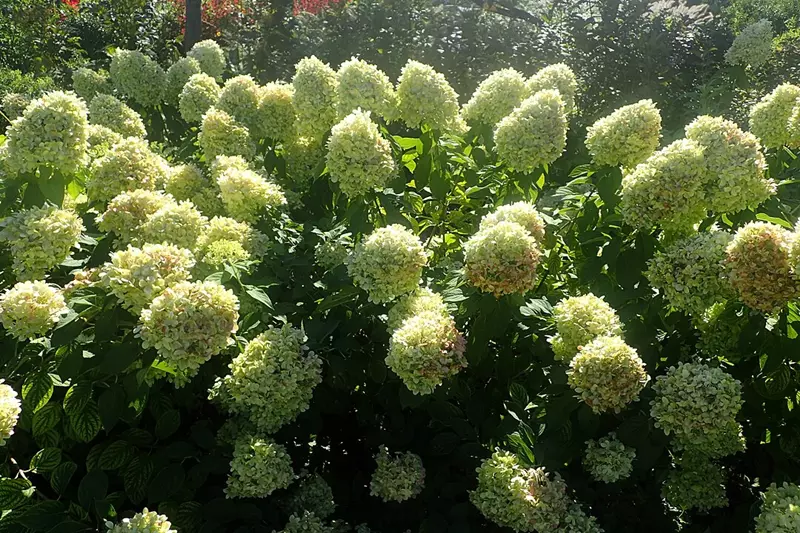
Discover how to grow and care for Hydrangea paniculata 'Limelight'. Learn about planting, maintenance, pruning, and the stunning beauty of this versatile shrub.
Read More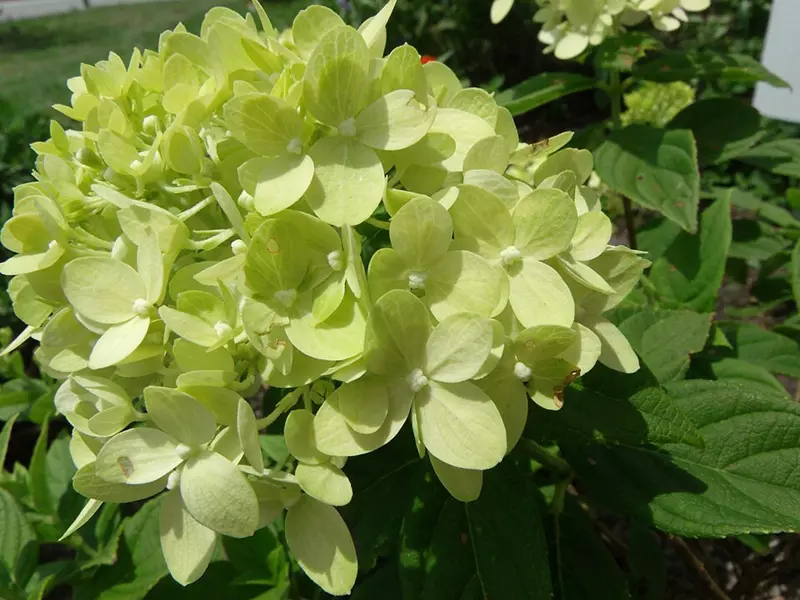
Discover the top 10 Hydrangea paniculata varieties popular in the UK. These stunning plants are ideal for gardens of all sizes and styles.
Read More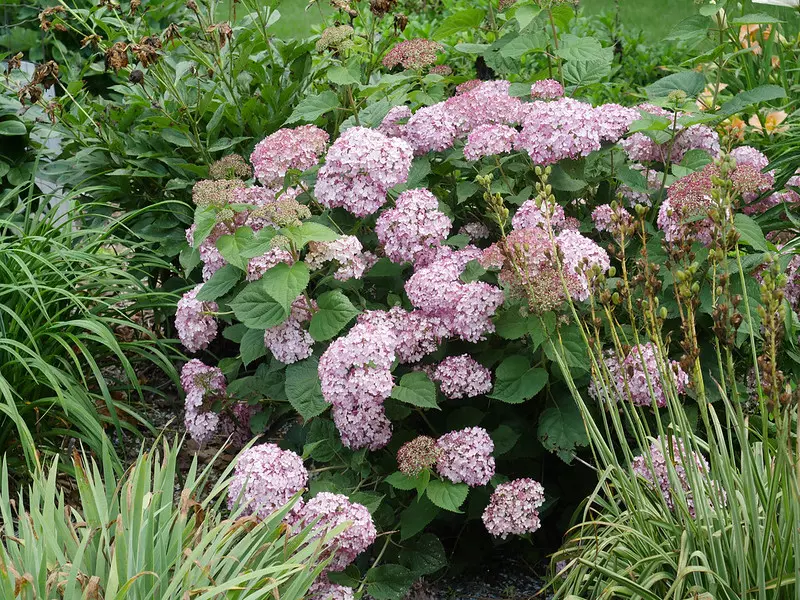
Discover what to plant with hydrangeas to create a thriving and visually stunning garden. Learn about the best companion plants and their benefits.
Read More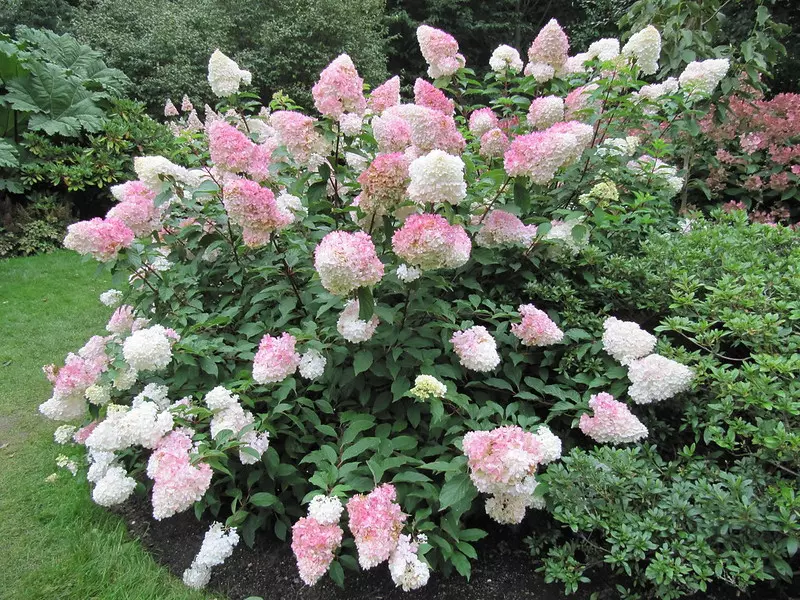
Discover the complete care and maintenance guide for Hydrangea paniculata 'Vanille Fraise', including planting tips, pruning advice, and pest management.
Read More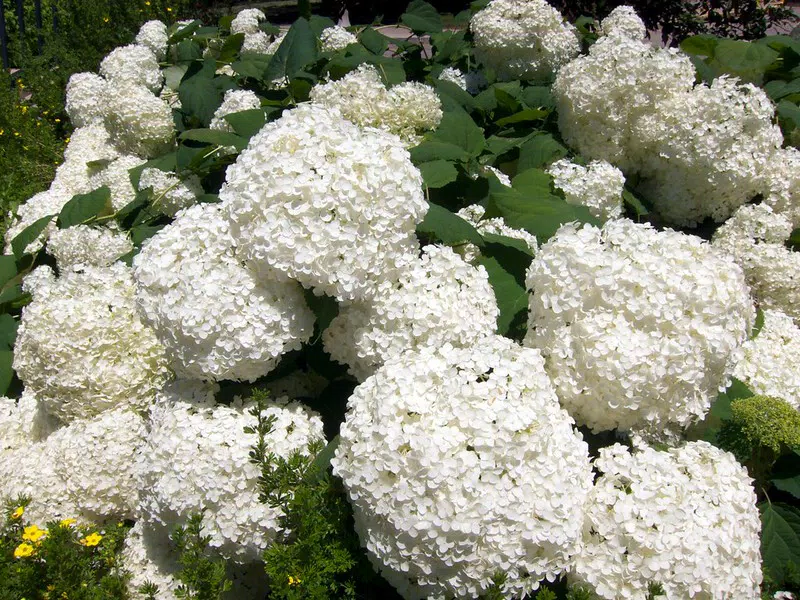
Discover the top 10 most popular hydrangea varieties in the UK, their unique characteristics, and tips for incorporating them into your garden.
Read More